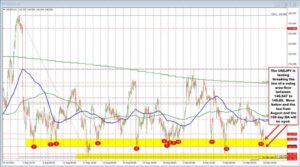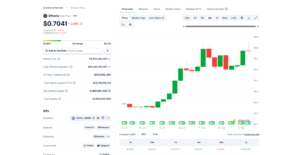Yen Drops Sharply Following Ishiba’s Resignation. Forecast as of 08.09.2025

Political turmoil in September is not limited to France. Japanese Prime Minister Shigeru Ishiba has decided to step down, which has significantly impacted the yen. Will it be able to recover? Let’s discuss this topic and make a trading plan for the USDJPY pair.
The article covers the following subjects:
Major Takeaways
- Increased political risks have pushed USDJPY quotes higher.
- The new head of government may put pressure on the BoJ.
- The stagflationary backdrop is hitting the yen.
- Short trades can be opened on the USDJPY pair at 148.7.
Weekly Fundamental Forecast for Yen
The Japanese yen is exhibiting elevated volatility. Following the release of disappointing US employment statistics, the USDJPY exchange rate rapidly declined toward the lower boundary of the 146.6–148.6 consolidation range. However, news of Prime Minister Shigeru Ishiba’s resignation caused the pair to begin the week with an up-gap. The heightened political risks have forced bears to retreat.
The former head of government was known for his strict stance on fiscal discipline. It is challenging to envision an individual in his position who would hold comparable views. The leading candidate for the post of prime minister, former Interior Minister Sanae Takaichi, takes a much more liberal view of fiscal, tax, and monetary policy.
This means that fiscal stimulus is looming, although the Bank of Japan may encounter political pressure. In the wake of Shigeru Ishiba’s resignation, the derivatives market has reduced the likelihood of a single rate hike by the Bank of Japan in 2025 to 43%. The market does not anticipate an overnight rate increase until April, although before this development, they were considering October and December as potential months.
Japanese Government Bond Yield Curve
Source: Bloomberg.
Japan is turning into a risky investment destination. The central bank’s passivity is leading to the fastest rally in the bond yield curve among the G7 countries. Rates on 30-year bonds are rising on fears that inflation will accelerate even further. Economic growth will likely slow down due to US tariffs. The stagflationary backdrop and political uncertainty are dealing a severe blow to USDJPY bears.
The upward revision of second-quarter GDP from 1% to 2.2% did not help the yen to recover, meaning that the Japanese economy is not on the verge of a collapse and will likely avoid recession in the next six months.
Japan’s Real GDP Change
Source: Bloomberg.
The USDJPY pair may have been affected by emotionally-charged trading. First, the pair was hit by a storm of controversy following statements by US Treasury Secretary Scott Bessent that the BoJ was lagging behind the curve. Then, central bank officials gave no clues about continuing the cycle of monetary policy normalization. Now, the prime minister is resigning.
However, the situation in Japanese politics was tense even without Shigeru Ishiba. The Liberal Democratic Party and its long-time coalition partner, Komeito, failed to secure the necessary majority in the last election. They have to negotiate with other parties that are demanding fiscal stimulus. Nothing will change for the new head of government nor for the yen.
The yen’s performance is directly linked to the pace of monetary policy by the Fed and the Bank of Japan. Even if the BoJ continues to sit on the fence, expectations of a 150 bp cut in the federal funds rate by April 2026 will severely hit the US dollar.
Weekly USDJPY Trading Plan
Under these conditions, the best strategy would involve selling the USDJPY pair on pullbacks. Meanwhile, short trades initiated at 148.7 should be kept open and increased.
This forecast is based on the analysis of fundamental factors, including official statements from financial institutions and regulators, various geopolitical and economic developments, and statistical data. Historical market data are also considered.
Price chart of USDJPY in real time mode
The content of this article reflects the author’s opinion and does not necessarily reflect the official position of LiteFinance broker. The material published on this page is provided for informational purposes only and should not be considered as the provision of investment advice for the purposes of Directive 2014/65/EU.
According to copyright law, this article is considered intellectual property, which includes a prohibition on copying and distributing it without consent.






